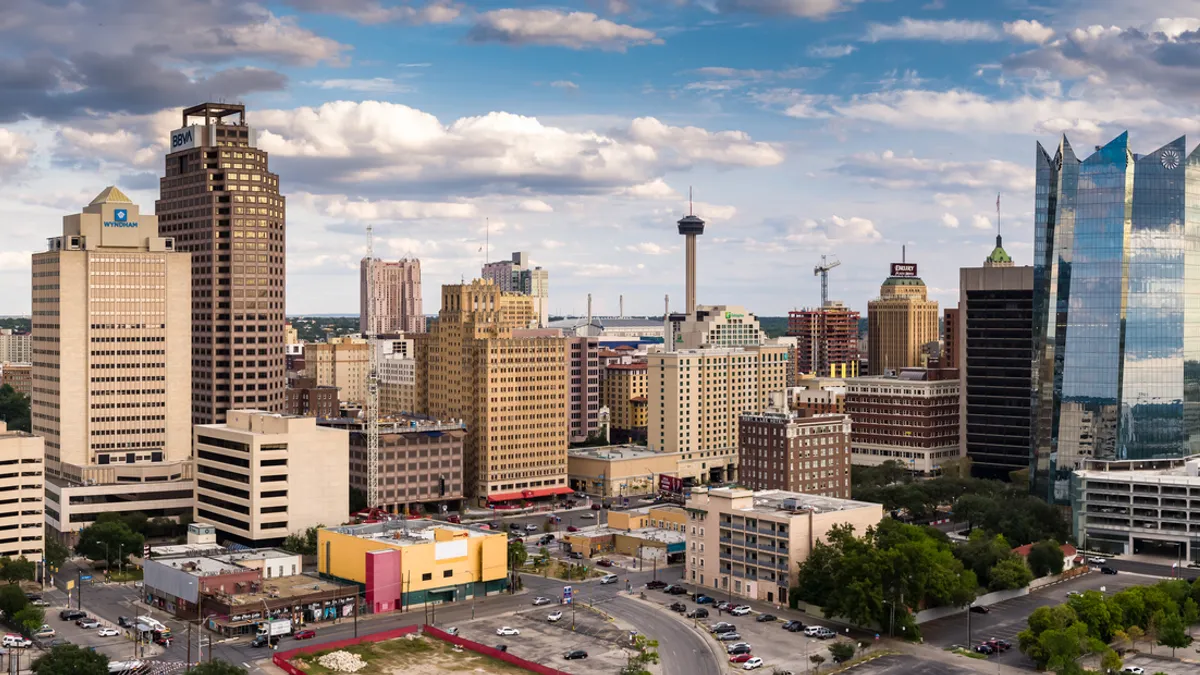San Antonio’s Office of Innovation in June released a smart cities road map that envisions how the city can use technology and data to improve public services and residents’ quality of life.
The smart cities team used a strong grassroots program to identify what residents want local government to look like, said Emily Royall, smart city administrator, in an interview. The team organized more than 20 community events and town halls in the city’s three innovation zones, sites it previously identified for testing smart city innovations. It also collected more than 3,300 comments from surveys.
The effort yielded five overall priorities, Royall said. Residents want the city to use technology to improve:
- Access to public information about city services. While residents want information available in multiple media and languages, they also want the city to reduce the digital divide and improve residents’ digital literacy to improve their information access.
- Public safety. This includes creating more walkable neighborhoods, reducing emergency response times, improving access to community services and reducing crime.
- Environmental quality. Residents look to technology both to reduce emissions from transportation and buildings and to provide real-time information about air quality, potential floods and dangerously high temperatures.
- Access to public transportation. Residents noted the lack of multimodal transportation options in a very car-based city, Royall said. They called for both more transportation options and more information about transportation and transport-related disruptions.
- Infrastructure. Residents need to be able to navigate the city safely, which calls for better street lighting as well as better road and sidewalk infrastructure, particularly for vulnerable residents.
“Technology may not always be the answer,” said Royall, but sometimes it is. Big data can be used to identify traffic patterns and adjust signal timing, helping with traffic congestion. Or there may be times when, instead of the fire department bearing the cost and risk of sending individuals into hazardous conditions, robots, sensors or drones could do the job, she suggested.
The road map suggests potential testbed technology projects the city could apply to each priority area. The document can guide investment and public-partnerships “that leverage technology for community impact” and serves as “an open call to problem-solvers (entrepreneurs, civil society, research institutions, and vendors) in key challenge areas defined by our community,” it states.
Road map efforts will build on the smart cities team’s seven years of work to date: It has carried out 30 pilot projects, refining them based on comments from residents and other city departments.
“One lesson we learned is how often technology is looking for a problem to solve,” Royall said. “What we discovered is, our most successful projects are sourced from direct community need,” whether that’s a need to address the digital divide or something else.
“Second, we learned that a lot of cities do smart cities as a silo,” she said. “In our most successful projects, we collaborated with city departments more directly. We learned from city staff what their barriers are, leveraging technology to help them.”
Chief Innovation Officer Brian Dillard, who oversees Smart Cities and three other programs in San Antonio’s Office of Innovation, names the city’s digital inclusion program as an example of how the Smart Cities team had already been using technology and data to address resident concerns. It conducted its first digital inclusion survey of residents in late 2019 and published the findings in May 2020, at the height of the pandemic, when the topic was becoming more urgent nationally. The report found disparities in access to broadband and digital services exist “in many of the same portions of the community where inequalities in educational attainment, homeownership, health insurance, employment, and life expectancy have existed for multiple generations.”
The findings led the city to approve a contract with AT&T to connect homes in lower-income parts of the city to the fiber optic network, and federal and city funding for the project have just been approved, Dillard said. President Biden announced in late June that Texas will receive $3.3 billion to expand high-speed internet, and Dillard said he expects San Antonio to receive a good chunk of that. The city has paid $8.8 million for the AT&T project.
The stakes of San Antonio’s smart cities program are high, Royall said. “We’re a majority-minority city. We’re one of the fastest-growing cities in the country. We’re equipping our city departments with tools they need to respond to the needs of residents.”
Measures of success, Royall said, include how many pilot projects the team launches, the outcomes and how those results inform city spending on new technologies. Community acceptance of smart cities projects is important as well, she said. The team has a website with information about all pilot projects, and residents can comment on them there or at community engagement events the team holds.
Royall encourages other cities that are starting or contemplating a smart cities program to persist. “The community work is slow, it’s hard” to get buy-in from as many neighborhoods as possible, she said, but she believes it’s crucial.













